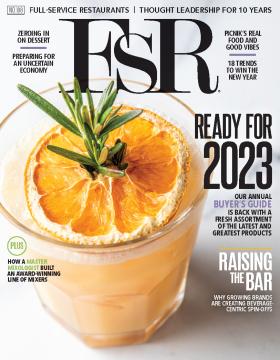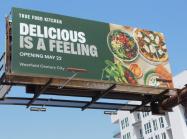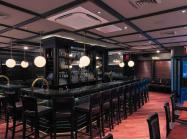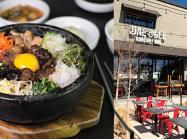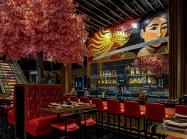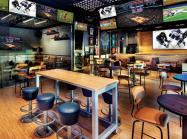Operators can gather real-time insights about events that are currently happening.
Is your restaurant using the latest technologies for real-time supply chain monitoring? If not, you won’t know definitively if the lettuce shipment you just received was part of a recent recall due to possible E coli contamination. And you won’t be aware of potential disruptors—including product shortages, weather events, and transportation delays—that could wreak havoc in your kitchen.
Think of it as playing chess, where you can use innovative technologies to learn your opponent’s strategies before the game. When you use tech tools—like Software-as-a-Service (SaaS) solutions, Artificial Intelligence (AI) and predictive analytics—for supply chain monitoring, you can gather real-time insights about events that are currently happening, plus events that could potentially occur and impact your business. Armed with that critical information, you’ll be able to think (and act) strategically to change vendors, toss contaminated products, or develop other appropriate continency plans.
Real-time supply chain monitoring—using advanced technologies—helps restaurants optimize operations, efficiency, accuracy, and performance throughout the supply chain. For instance, SaaS solutions, RFID tagging, and GPS tracking offer real-time visibility and data analytics capabilities, so restaurants can make more informed, data-based decisions.
Seven essential reasons that restaurants should use real-time supply chain monitoring include the ability to:
Identify potential risks and disruptions. Tech tools provide access to accurate real-time data. By leveraging these critical insights, restaurant operators can tackle potential disruptions within the supply chain and take proactive measures to address them. Since an effective supply chain monitoring system tracks food across the supply chain, you’ll be aware of any threat of a risk or disruption so you can act quickly to minimize its impact, and maintain business as usual.
Optimize operations. Real-time visibility allows organizations to identify inefficiencies, streamline processes, reduce delays, and improve overall supply chain performance. The right tech solutions can increase productivity, collaboration, insights, transparency, and output, while reducing disruption, interruption, and waste. This helps restaurants elevate sales, loyalty, and trust.
Improve communication. Supply chain monitoring increases transparency and will improve communication with supply chain vendors. Ask vendors about their quality monitoring process, which traces food from point of origin to consumption. They should share food quality audits, assessments, and reports on a continual basis. Gauge each vendor’s transparency and honesty. If you have any concerns that a vendor isn’t upholding the highest levels of safety and quality, change suppliers immediately, since any breach in safety or quality can cause significant (possibly irreputable) damage to your restaurant’s reputation.
Identify problems and take corrective actions. Supply chains are like cranky toddlers—you never know what you’ll encounter at any given moment on any given day. Therefore, it’s important to be constantly vigilant. RFID, commonly used in retail, is being explored as a solution for the food industry to trace ingredients from suppliers to restaurants in real-time. This would help restaurants (and suppliers) better trace products to avoid costly, damaging food safety breaches. Using tech tools for real-time supply chain monitoring can help restaurants—even huge, global brands—maintain safety, quality, and consistency across their networks.
Make more informed decisions. Real-time data analysis facilitates better decision-making, which can reduce waste (and costs) associated with excess inventory, labor expenses, and transportation inefficiencies. Data can help improve forecasting accuracy, allowing operators to see when supplies are getting low and what quantities need to be ordered. Automating this process reduces the time operators spend on inventory management so they can focus on other aspects of their business. Additionally, tech tools can help operators anticipate shortages or delays in the supply chain so they can make informed decisions to pivot to contingency plans, like working with alternate suppliers or subbing different products if certain ingredients are unavailable.
Meet stakeholder demand. Key audiences—including customers, employees, potential investors, influencers, the media, etc. —are scrutinizing whether companies are committed to doing the right things. They’re supporting brands that are following safety protocols, buying responsibly sourced meats, prioritizing ESG initiatives, treating employees fairly and animals ethically, etc. Real-time supply chain monitoring provides increased transparency, allowing restaurants to better communicate this information to boost trust and gain support from these audiences.
Boost sustainability. Sustainability is important to today’s customers, with two out of three (66 percent) saying it’s important that restaurants are transparent about their sustainability practices. Real-time visibility solutions enable organizations to minimize inefficiencies throughout the supply chain by optimizing routes, reducing idle time, and lowering carbon emissions. For instance, blockchain technology can help organizations ensure more sustainable sourcing methods are used for raw materials – and even better manage climate risks.
Restaurants will experience numerous, significant benefits by employing real-time supply chain monitoring, including the ability to improve your safety, transparency, efficiency, and sustainability. Building a more transparent, resilient, flexible, sustainable supply chain will improve key performance indicators (KPIs) for your restaurant, like driving revenue growth and efficiency gains, and will also offer important intangible benefits, like improving customer loyalty and brand reputation.
Paul Damaren is Executive Vice President, Business Development at RizePoint, a technology leader in the food safety, quality management, compliance, and social responsibility space. RizePoint’s quality management software solutions help companies, including Starbucks, McDonald’s, Marriott, and more, keep brand promises through their quality, safety, and compliance efforts. Customers gather better data, see necessary actions earlier, and act faster to correct issues before they become costly liabilities. Check out RizePoint’s new website to learn how these solutions can help your company.

